
This article was co-authored by Robyn Hughes, ND, and Correct Toes inventor Ray McClanahan, DPM, and it appears on the Correct Toes Blog in a slightly different form.
Myths abound in the footwear industry, and many types of shoes that are purported to be “good for your feet” can actually lead to foot pain and problems. In this article, we take a closer look at clogs, a style of shoe that many believe promotes foot health but is, unfortunately, a common contributor to a variety of foot ills. Read on to learn all about clogs and why they fail to live up to their reputation as builders and preservers of optimal foot and toe health.
A Brief History of Clogs
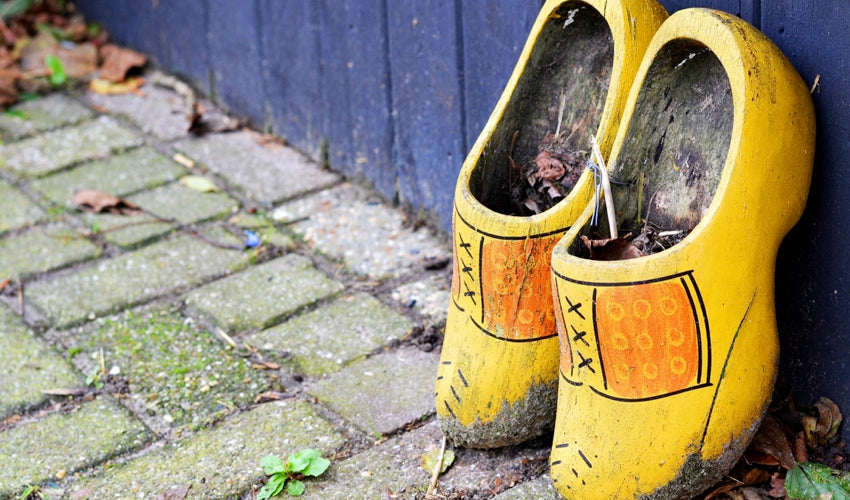
From restaurants to offices to hospitals to healthcare clinics, clogs are ubiquitous footwear in work and casual environments alike. A traditional clog is made solely from wood, while contemporary clogs incorporate wood soles (or no wood at all) with upper materials such as leather, which allows for more versatility and greater comfort. Today’s clogs (such as Danskos) are inspired by that original wood-style design, and they are sometimes backless, almost always have a heel and pitched toe box, and are usually stiff-soled.
Clogs are a traditional part of many cultures throughout the world, including Dutch, Swedish, and Japanese cultures, and are worn for several key reasons, including protection, fashion, and for certain types of dance. The popularity of clogs has increased in recent years, as many consumers have been persuaded that clogs are a practical and foot-healthy option.
But is this belief fact or fiction? And are clogs really any different from “conventional” footwear? Let’s find out.
Footwear Industry Myths Perpetuated

Many doctors (including podiatrists) recommend clogs to patients who have foot ailments. Some of the design characteristics that have earned various types of clogs this high praise include anatomically contoured arch support, rocker-bottom soles, and heel elevation—the latter an attribute that some doctors believe eases the strain on leg and back muscles.
It’s no wonder, then, that clogs have gained an almost mythic reputation for being foot-healthy footwear. Sadly, this reputation is built on an incredible amount of misinformation that touts arch support, bizarre sole construction, and heel elevation as beneficial shoe design features. The idea of clogs as beneficial footwear has gone mainstream, but the underpinnings of this belief are nothing more than regurgitated shoe industry myths about what constitutes a healthy and stable home for your feet.
The Truth About Clogs

The truth is, clogs are among the most harmful or injurious shoe types available to consumers. And most clogs share many of the same unfavorable and damaging design elements that other conventional shoes possess (please see the section immediately below for more detailed info about these elements). Clogs, like other conventional shoes, strip your foot of its inherent power, destabilize your main foot arch, and contribute to common toe deformities and problems, such as hallux valgus, bunions, tailor's bunions (bunionettes), hammertoes, and clawtoes, among others. Clogs also make it difficult for you to experience much (if any) tactile feedback from the ground you walk on, due to their extraordinarily thick and rigid soles.
You won’t hear this truth about clogs from many other sources, which is why it’s so important to heed this warning: Clogs, like other types of conventional footwear, cause or contribute to many foot and toe problems, including neuromas, plantar fasciosis, and ingrown toenails. And they do this because they hold your foot and toes in an unnatural, compromised position for many hours at a time. It’s only by examining the harmful design elements included in most clogs, though, that you’ll get a better sense of how clogs actually impair foot health and cause problems.
Harmful Shoe Design Elements

The following design elements are common inclusions in most clogs (as well as in other types of dressier footwear). These elements, either individually or collectively, alter foot anatomy and function in unfavorable ways and should be avoided:
-
Rigid Soles: Thick, rigid soles make it almost impossible to get a sense of the ground you’re walking on, which may predispose you to errant footfalls and ankle injuries. The biggest problem with rigid soles, however, is that they hold your feet and toes in a compromised and deformed position for prolonged periods. When you wear shoes with rigid soles, it’s like putting your foot in a cast and expecting it to get stronger. In most cases, only a very thin layer of material between your foot and the ground is all that’s required to adequately protect your sole.
-
Heel Elevation: Most clogs possess a design element called heel elevation that raises your heel above your forefoot. Heel elevation is problematic for several reasons. First, it destabilizes your inherently strong main foot arch (your medial longitudinal arch). Second, it places excessive pressure on the ball of your foot and the many important structures located in this part of your foot (e.g., bones, nerves, blood vessels, etc.). And third, it increases your likelihood of an ankle sprain, as an elevated heel is less stable and rolls more freely from side to side than a heel that is flat on the ground. A foot-healthy shoe has a completely flat sole from heel to toe.
-
Tapering Toe Boxes: Toe box taper—and the wedge-like position it forces your toes into—is a major problem associated with most conventional shoes, including clogs. There is a common belief that clogs possess a “wide toe box,” and that this is good for foot health. While it’s true that a wide toe box is indeed a foot-healthy design feature to look for in footwear, most shoes that claim to have a wide toe box—including many varieties of clogs—are actually widest at the ball of the foot, not at the ends of the toes, where you need the width the most. A truly foot-healthy shoe possesses a toe box that allows your toes to splay properly, the way nature intended.
-
Toe Spring: Toe spring is another major design flaw built into most conventional footwear, including clogs. Toe spring, also known as toe ramping, is a design element that elevates your toes above your forefoot. When combined with heel elevation, toe spring effectively inverts your main foot arch, destabilizing your arch and putting excessive pressure on the ball of your foot. When it comes to toe spring, what’s especially pronounced in most clogs (even more than other types of footwear) is both the toe spring itself and the rigidity of this toe spring. The rigid toe spring built into most clogs holds or immobilizes your toes in an unnatural, extended position, which contributes to foot tendon imbalances and tight toe extensor muscles over time. Tight toe extensor muscles and tendons can cause various toe deformities, a problem collectively known as crooked toes.
The above shoe design elements, found in all clogs, do indeed wreak havoc on the foot, but what are the long-term effects of clogs and other conventional footwear?
Lasting Effects of Clogs & Other Injurious Footwear

Clogs and other conventional footwear can cause both immediate and long-term discomfort and foot problems. Some research also indicates that the loads on hip and knee joints are significantly higher in people who wear conventional footwear than in those who go barefoot. A 2006 study published in the journal Arthritis and Rheumatism states that conventional footwear may be contributing to the prevalence and progression of hip and knee osteoarthritis in our society. Osteoarthritis is an extremely painful joint problem that’s associated with excessive joint wear and tear. This health problem can significantly affect your quality of life and keep you from enjoying your favorite physical activities.
What, Then, Constitutes a Foot-Healthy Shoe?
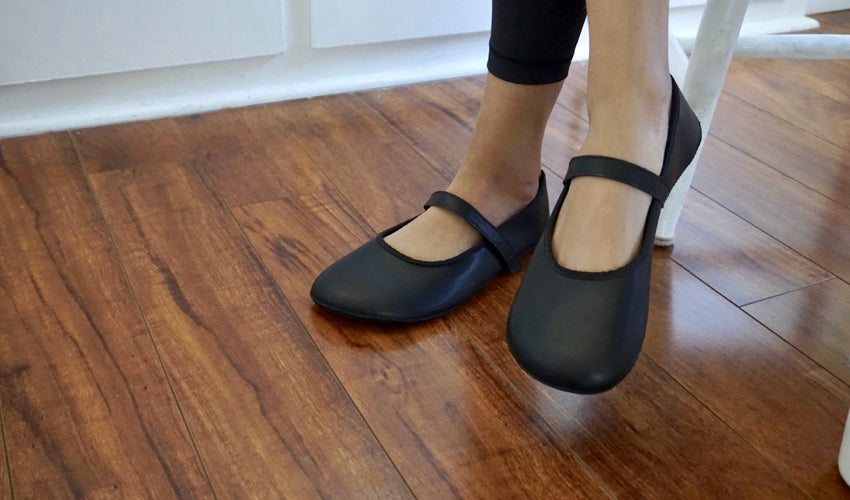
Foot-health-positive footwear (i.e., footwear that respects normal and natural foot and toe anatomy) allows your toes to splay and can help prevent or address foot and toe problems by staying out of the way of your foot and toes and allowing your foot to function the way nature intended. Foot-healthy footwear possesses the following key characteristics:
- A lightweight design that lets your foot move naturally
- A flexible sole that can be easily bent or twisted in multiple directions
- A completely flat support platform from heel to toe to enable natural arch support
- A toe box that is wide at the ball of the foot and then gets even wider toward the ends of your toes (instead of getting narrower)
One of the first steps in preventing or addressing common foot problems is to adopt foot-healthy footwear. At Natural Footgear, we take great pride in featuring men’s and women’s footwear that best supports and preserves natural foot health. Every shoe that appears on our site is Natural Footgear Certified, which means it lives up to our expectations for what constitutes a healthy piece of footwear. We are extremely picky when it comes to the footwear we feature on our site, and not many brands or models make the cut.
Foot-Healthy Dress Shoes

Finding footwear (especially for women) that's both foot-healthy and attractive by society's standards (for the workplace and for formal use) is very challenging. We're always on the search for foot-healthy dress shoes. If you know of a model that fits our criteria for foot-healthy footwear, we would be happy to hear from you. In the meantime, here are a few of our favorite, dressier options that are currently featured on the Natural Footgear site:
Ahinsa Ananda Barefoot Ballet Flat (for Women)

This comfortable, Mary Jane-style minimalist shoe has one of the most generous toe boxes of any women's shoe we've ever seen, and its super flexible sole ensures that your foot can become strong on its own. The Ahinsa Ananda Barefoot Ballet Flat both looks nice and supports natural foot health, making it a rare find for women seeking a dressier shoe for work or around town.
SHOP AHINSA BALLET FLAT
Lems Nine2Five (for Men)

The Lems Nine2Five is one of the most comfortable shoes we've ever tried, comes in a variety of sizes (including larger ones for bigger-footed men), and can easily be worn in both office and casual settings. It has a very wide toe box that easily accommodates Correct Toes and a zero-drop platform that helps enable natural arch support. The Nine2Five covers a lot of bases, and we think you'll love this shoe as much as we do.
SHOP LEMS NINE2FIVE
Other possible foot-healthy fashion footwear options include the Lems Chukka for men and women and the Lems Boulder Boot in Leather Raven and Leather Russet for men and women. More about these models here:
Lems Chukka Boots (for Men & Women)

The Lems Chukka is an attractive and versatile casual boot that offers your foot a comfortable environment in which to flex, bend, and move. This boot, with its stylish cut and fashionable design, is an excellent choice for any number of occasions or settings, whether it be for trips around town or for meetings with clients in your office or co-working space. With its accommodating upper and injection blown rubber sole, this minimalist boot is incredibly comfortable and lightweight, and it also packs away easily, making it a great option for longer trips.
SHOP LEMS CHUKKA
Lems Boulder Boot in Leather Raven (for Men & Women)

The Lems Boulder Boot in Leather Raven is a unisex boot that you can wear in many different ways. It possesses an upper that's made of durable 1.8 mm full-grain leather to help improve foot comfort, and it sports a generous toe box that's compatible with Correct Toes, which allows you to experience the foot health benefits that come with natural toe splay. This lightweight, barely-there boot contains no heel counter, toe counter, or shank, and it packs away easily, preserving space in your travel bag or luggage.
SHOP MEN'S SHOP WOMEN'S
Lems Boulder Boot in Leather Russet (for Men & Women)

The Lems Boulder Boot in Leather Russet is identical to the Leather Raven boot in every respect except for its color. It's another excellent choice for fashion-conscious folks interested in building and preserving natural foot health.
SHOP MEN'S SHOP WOMEN'S
Additional Helpful Footgear

It’s also important to restore normal, healthy foot and toe anatomy after years of wearing conventional footwear. A toe spacing device, such as Correct Toes, can help you do just that, as can metatarsal pads and toe socks. Certain foot and toe rehabilitation exercises are also important, including the Toe Extensor Stretch, Big Toe Stretch, and Hammertoe Stretch, as well as the Hacky Sack Grab and Short Foot Exercises.
SHOP CORRECT TOES SHOP INJINJI TOE SOCKS SHOP METATARSAL PADS
Opinion: Clogs Just Don't Measure Up

Clogs are not what they are touted to be. And wearing clogs is not a way for you to improve or preserve your foot health, as most clogs include design elements that actually cause foot pain and problems, either in the short term or down the road. To truly preserve foot and toe health, seek out men's or women's foot-healthy footwear that is lightweight, is flat from heel to toe, possesses a toe box that’s widest at the ends of your toes, and has a sole that can be easily bent and twisted. Your feet will thank you!
Reference
- Shakoor N, Block JA. Walking barefoot decreases loading on the lower extremity joints in knee osteoarthritis. Arthritis & Rheumatism. 2006. Sep; 54(9): 2923-2927.
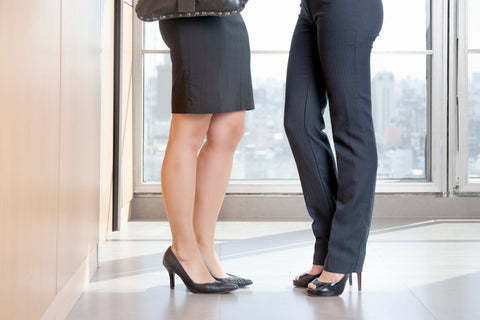 What foot issues are commonly caused by women's fashion footwear? Many. Among the most common are bunions, plantar fasciosis (often inaccurately referred to as plantar "fasciitis"), hammertoes, neuromas, and ingrown toenails. There are three main "features" of fashion footwear that, over time, cause foot problems in women. These design elements are heel elevation (the heel is elevated above the forefoot), tapering toe box (the toe box gets narrower as it...
Read more
What foot issues are commonly caused by women's fashion footwear? Many. Among the most common are bunions, plantar fasciosis (often inaccurately referred to as plantar "fasciitis"), hammertoes, neuromas, and ingrown toenails. There are three main "features" of fashion footwear that, over time, cause foot problems in women. These design elements are heel elevation (the heel is elevated above the forefoot), tapering toe box (the toe box gets narrower as it...
Read more



















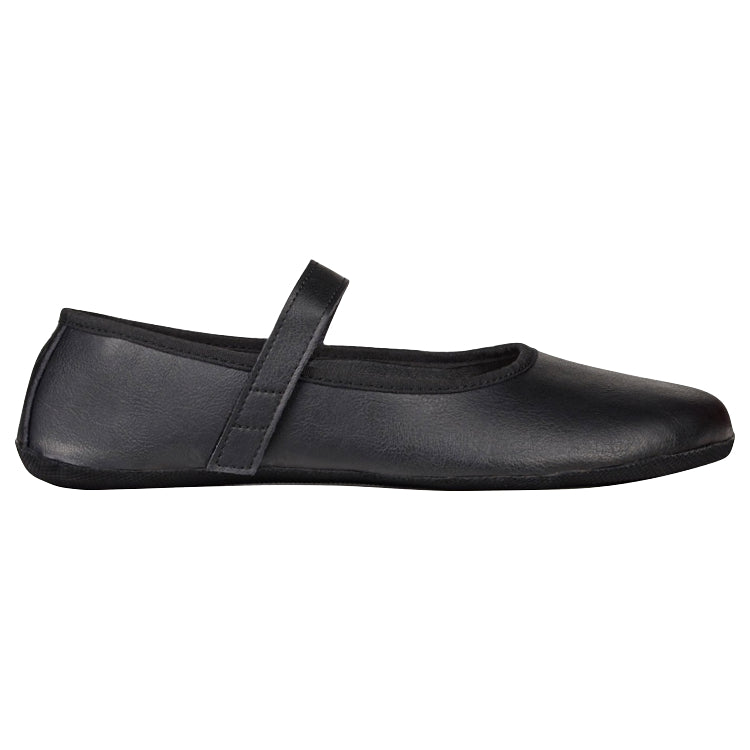
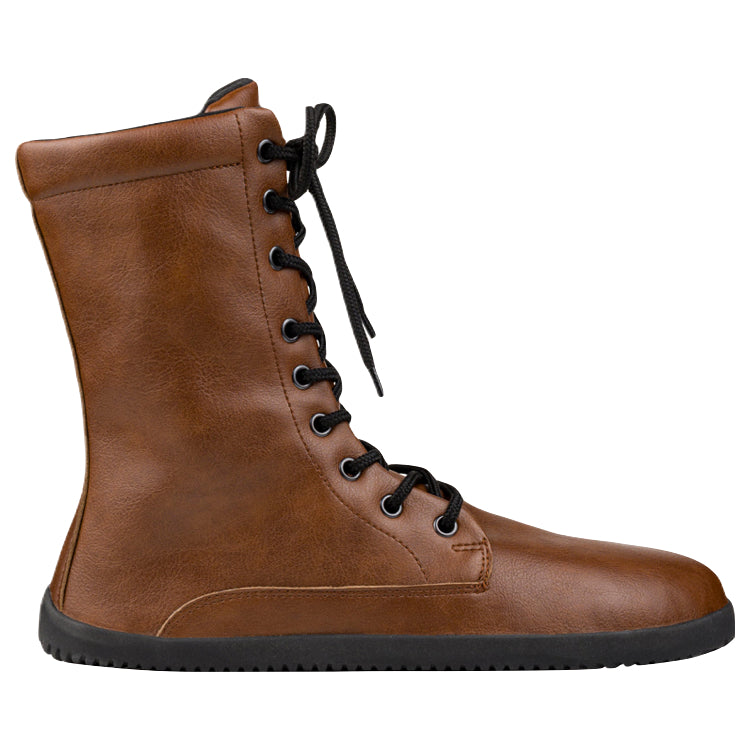

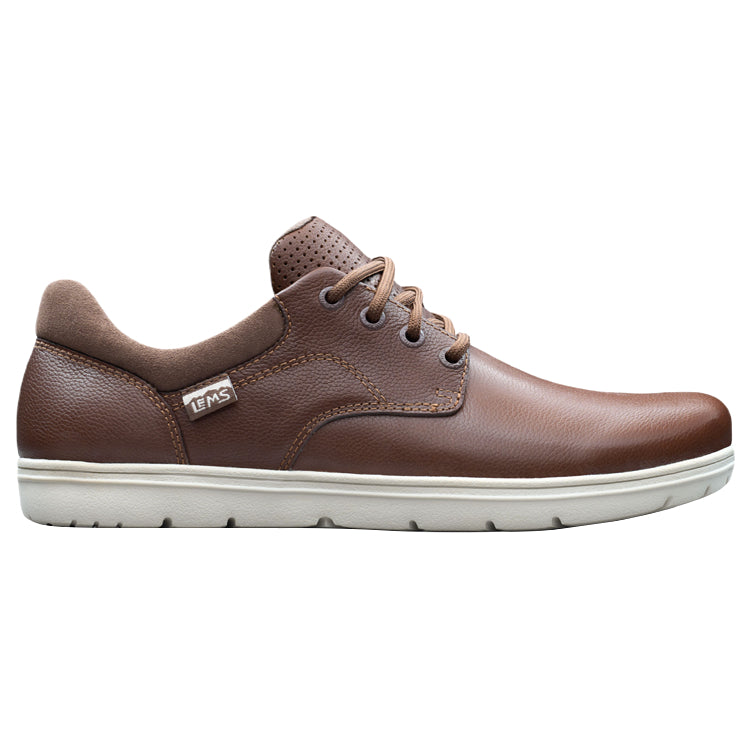



I have “Morton’s toe.” What footwear do you recommend, and do you have round metatarsal pads, quarter-size, to place just under the big toe?
Hi, Debbie,
Thank you for your comment and questions.
For folks with Morton’s toe, we typically recommend the same kind of footwear that we normally do; that is, footwear that’s widest at the ends of the toes, completely flat from heel to toe, and flexible in the sole. The key is to get the sizing right, such that the shoe accommodates the longer second toe. You don’t want that longer toe repeatedly bumping into the end of your shoe’s toe box when walking or running.
At this time, we do not offer the kind of metatarsal pads that you’re inquiring about, but if anything changes on that front, we will most definitely let you know.
Kind regards,
Marty Hughes, DC
When I first read this article, I was gleeful. I had just replied at length to an article elsewhere that was touting the supposed benefits of Dansko clogs and criticizing a healthier sandal. But even though I know we all need to reset our indoctrinated views of “good-looking” shoes, and even though I will never wear pointy-toes, spike-heeled, or zero-protection “women’s shoes,” I am pretty disgusted at your options here. Both of the women’s shoes—especially the rubber lace “foot gloves”—scream, “no, I don’t have to hold a job in professional America,” and both are impractical in anything like wet or cold weather. If you work in a co-op health food store in Portland or are a tenured art or anthropology professor in an obscure liberal arts school, you could wear the “ballerina” shoes. Otherwise, you will not be appreciated (and is there anything more damaging to feet than REAL ballerina toe shoes?). Isn’t that an ironic name for any foot-friendly shoe? Women who’d be persuaded by that “feminine-sounding” shoe name would be horrified by the naturally hairy legs and lack of socks that apparently go best with these shoes, judging by the photos. Where are the low-key oxfords for women, as you have for men? Seriously: We get combat boots, thin ballerina sock-shoes, and baby-pink rubber lace toe gloves? As for the pink lace, they look a little creepy, though I like pink. Just skin colors or basic black or toe gloves, or maybe sporty neons … please. But realistically, if I were able to wear these to a backyard BBQ in middle America—where I have to live and work—without being talked about for weeks, I’d be amazed. So while I, too, wish for a world where our bodies are allowed to be more natural, these options are unrealistic for most working people, and the stylistic leap is too far to make in one jump for me. Specifically, the men-only options other than the boots are decidedly more stylistically and practically middle-of-the-road (and therefore real-world friendly) than the creepy “feminine” options for women.
Hi, Perri,
Thank you for writing in. You shared a lot of very interesting points in your comment above! While I disagree with most of them, your point about there being a dearth in what would appear to be typically “feminine” foot-healthy footwear options is noted. This aspect of the foot-healthy shoe movement has been a little slower to hit its stride, but I predict there will be more options for women, specifically, appearing on the market over time. Keep checking back for new models every now and then, and in the meantime, please do feel free to reach out to the individual manufacturers with your thoughts and requests.
Kind regards,
Robyn Hughes, ND
I am a healthcare worker. I have been wearing clogs for 20 years. There are several things I like about clogs: I like the look of clogs, the height they give because I am short, and their durability. I do have a large bunion on my left foot. I do wear Correct Toes after working all day. They seem to help. I need a shoe that does not look like a sneaker and gives me some elevation. HELP!
Hi, Susan,
Thank you for your comment. I know that, in the past, a lot of healthcare workers have enjoyed using Crocs while on the job. Certainly, not all models or colors might be appropriate for a healthcare setting, but (at least at the time of writing this reply), there is a clog-like Crocs model called the Specialist II that, while not perfect in terms of foot-healthy features (it has some heel elevation and at least some degree of built-in “arch support,” for example), looks better than most other options out there. Best of all, though, is if you can adopt a shoe such as the Lems Primal 2 or Ahinsa Bindu 2. Wearing either of these models will keep your feet happy all throughout your shift.
Kind regards,
Robyn Hughes, ND
I have nearly flat feet. Almost no arch at all. I also broke my ankle this year and still have pain. My orthopedist was little to no help, just said get good shoes. I find flat shoes hurt my feet and find my ankle sorer when I’m working on them all day. I was looking into clogs but after this article, I think not. What kind of shoe would you recommend? I also need a slip-resistant shoe, as I work in a nursing home.
Hi, Lelani,
Thank you for your comment. I’m sorry to hear about the foot problems you’ve been experiencing. I suspect you might see some improvements in your foot arch height/strength, ankle stability, and foot comfort with the adoption of Correct Toes toe spacers. Using Correct Toes could be a game-changer if the device is paired with a comfortable zero drop shoe with a sufficiently wide toe box to accommodate the spacers (and, therefore, optimal toe splay). I can’t make any specific footwear recommendations for you without seeing you in person, but there are a number of models out there that possess a nice wide toe box, offer you a comfortable fit, and provide you with excellent traction. Avoiding clogs is always a good strategy in our books, so I think you’re on the right track there.
All the best,
Robyn Hughes, ND
Thank you so much for sharing such a great article. Keep posting like this. Good wishes.
Thank you for your kind words, Anna! We really appreciate it.
Cheers,
Robyn Hughes, ND
I see it mentioned in passing, but I"m convinced wearing clogs for years destroyed my knees. There’s a lot of research now to back up my personal hypothesis! I’m slowly working my way back to health, and I am pleased to say I’ve found quite a few foot-appropriate, feminine shoes for my very conservative DC office. Square-toed loafers were one of my best discoveries.
Hi, Bette,
Thank you for your comment. I’m sorry to hear about the knee problems you have experienced, but I’m glad to hear that you’re battling back over time. I wish you much continued success in your pursuit of optimal musculoskeletal health!
Kind regards,
Robyn Hughes, ND
Thanks for sharing this wonderful blog post! We work for the same cause!
You’re very welcome, Nilesh! And … glad to hear that we are working for the same cause.
Kind regards,
Robyn Hughes, ND
Hi. I recently noticed that the tops of my toes have a raised lump. It doesn’t hurt or feel rough, just soft and mushy. I think it’s from wearing sandals in the summer. Clarks are my favorite brand. Are Mary Jane styles, and anything that is not a clog or sandal, better, as long as the foot feels good?
Hello, Heidi,
Many thanks for your comment. The raised lump on the tops of your toes could be a soft callus or another issue related to pressure. If it’s not painful, it’s probably not a major concern, but you may want to avoid shoes that cause friction in that area (and you may want to consult a foot care professional for a better understanding of what’s truly going on). Mary Jane styles could indeed be a good option, depending on the particular model and what sort of design features it possesses. It’s always a good idea to choose shoes that feel comfortable and don’t exacerbate the issue, and it’s great that you’re being mindful of how your feet feel.
All the best,
Robyn Hughes, ND
My late mother (born in 1917) had the most incredible, healthy feet all her life. She wore clogs on her parents farm all throughout her childhood. I am fortunate enough not to wear any footwear in my retirement most of the time now. I think my feet love their natural environment.
Hi, Mark,
Many thanks for your comment. It sounds like your mother’s feet were quite resilient! Spending time barefoot in your retirement is a wonderful way to let your feet move and strengthen naturally. While not everyone can go barefoot all the time, it’s fantastic that you’re listening to your body and allowing your feet to stay in their natural environment when possible. Keep enjoying your natural foot freedom!
All the best,
Robyn Hughes, ND
I recently switched to a different type of wooden shoe, which is a traditionally styled Japanese geta (not the modern style, which has an elevated heel and other weirdness). It took a while to get used to wearing them, but it feels like walking barefoot on a wooden floor. I like that they’re completely flat, allow the foot to flex (because they’re only connected around the ball), and leave the toes and heel unconfined. The backs of my heels always get rubbed raw with other shoes without wearing multiple layers of socks, because I’m usually barefoot indoors. Thankfully, I live in a cold country where two pairs of socks are fine most of the year. The teeth on these wooden shoes also have some unexpected advantages. They roll forward despite having no toe spring, and they discourage heel striking, which is reducing the impact on my knees. The overall elevation of the shoes is forcing my calves and stabilization muscles to develop more, and the smaller footprint means puddles don’t splash as much! I’d be interested to hear your thoughts on these wooden flip-flop/stilt hybrids, since one of your major points in favor of flip-flops stands here—that they’ve been used continuously for hundreds (if not thousands) of years in Japan and India.
Hi, Sean,
Your geta experience sounds really interesting! It’s great that you’ve found something that works for your feet and knees. Traditional footwear like geta can offer a lot of freedom for the toes and a strangely natural feel while walking, as you mentioned. The benefits you’re experiencing—like reduced impact on your knees and increased muscle activation—are also things we advocate for with minimalist shoes. For shorter, mindful walks, and for developing your calves and lower leg stabilizing muscles, they seem like an interesting choice. I agree with you—many traditional styles—tabis, huaraches, etc.—have stood the test of time, and when worn mindfully, they can be great for foot health!
All the best,
Robyn Hughes, ND